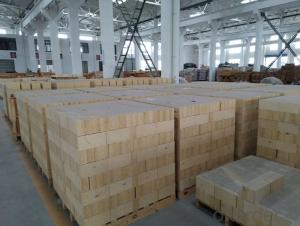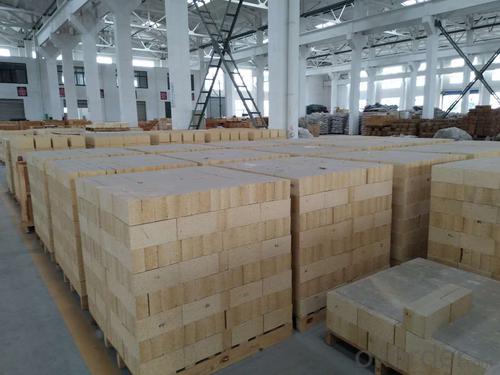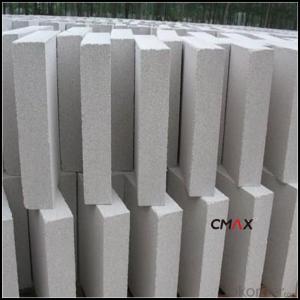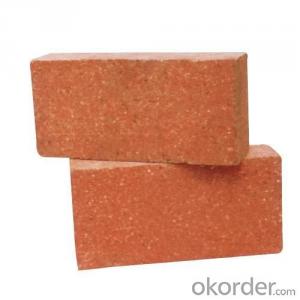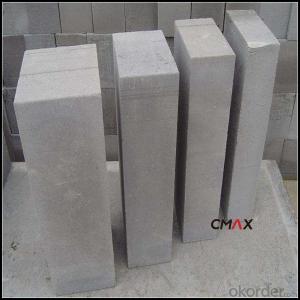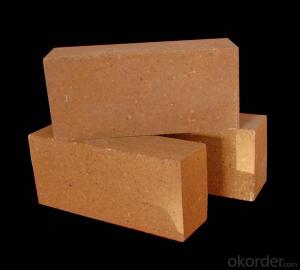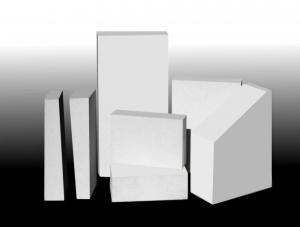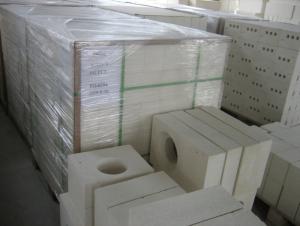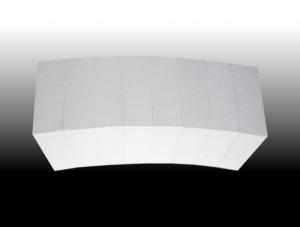Insulating Fire Brick - Heavy Duty Fireclay Insulation Brick
- Loading Port:
- Shanghai
- Payment Terms:
- TT OR LC
- Min Order Qty:
- 10 m.t.
- Supply Capability:
- 2000 m.t./month
OKorder Service Pledge
OKorder Financial Service
You Might Also Like
Specification
Fireclay Insulation Brick With Heavy Duty Fire-resistant
Product Description
Description For Fireclay Insulating Brick:
1. According the shape, it can be divided into standard brick, special-shaped brick.
2. According thecharacteristic, it can be divided into high alumina insulating brick, fire clay insulating brick, Mullite insulating brick, corundum insulating brick, etc.
3. According the application, it can be divided into building materials for blast furnace, Building materials for coke oven, Building materials for steel making furnace and so on.
Characteristics For Fireclay Insulating Brick:
1. Low thermal conductivity.
2. High strength and resistance to corrosion.
3. Low heat capacity.
4. Low shrinkage after heavy firing.
5. High insulation.
6. High refractoriness.
7. Low density.
8. Good thermal shock resistance under high temperature.
9. Thermal insulation energy-saving effect is good.
Characteristics For Fireclay Insulating Brick:
Electric furnace, blast furnace, cement kilns, Industrial furnaces
The Physical And Chemical Indicators:
Item | Clay Insulating Brick | ||||||
B-1 | B-2 | B-3 | B-4 | B-5 | B-6 | B-7
| |
Bulk Density(g/cm3) | ≥ 0.7 | ≥ 0.7
| ≥ 0.75
| ≥ 0.80
| ≥ 0.80
| ≥ 0.90
| ≥ 1.00 |
Cold Crushing Strength Mpa |
≤25
|
≤25
|
≤25
|
≤25
|
≤25
|
≤30
|
≤30
|
Thermal Conductivity (350°C)W/m.K | ≤0.30 | ≤0.35 | ≤0.35 | ≤0.45 | ≤0.50 | ≤0.55 |
≤0.55
|
Reheating Linear Change less than 2.0% °C | 900 | 1000 | 1100 | 1200 | 1300 | 1400 | 1500 |
Common sizes
Straight type | Arch type | Wedge type |
L×W×H (mm) 230×114×65 230×114×75 230×114×32 220×110×60 220×110×50 220×110×40 220×110×30 | L×W×H/h (mm) 230×114×65/55 230×114×65/45 230×114×65/59 220×110×65/50 220×110×75/65 220×110×60/40 | L×W×H/h (mm) 230×114×65/55 230×114×65/45 220×110×75/65 220×110×60/40 |
Other sizes according to customer requirements | ||
Product Details:
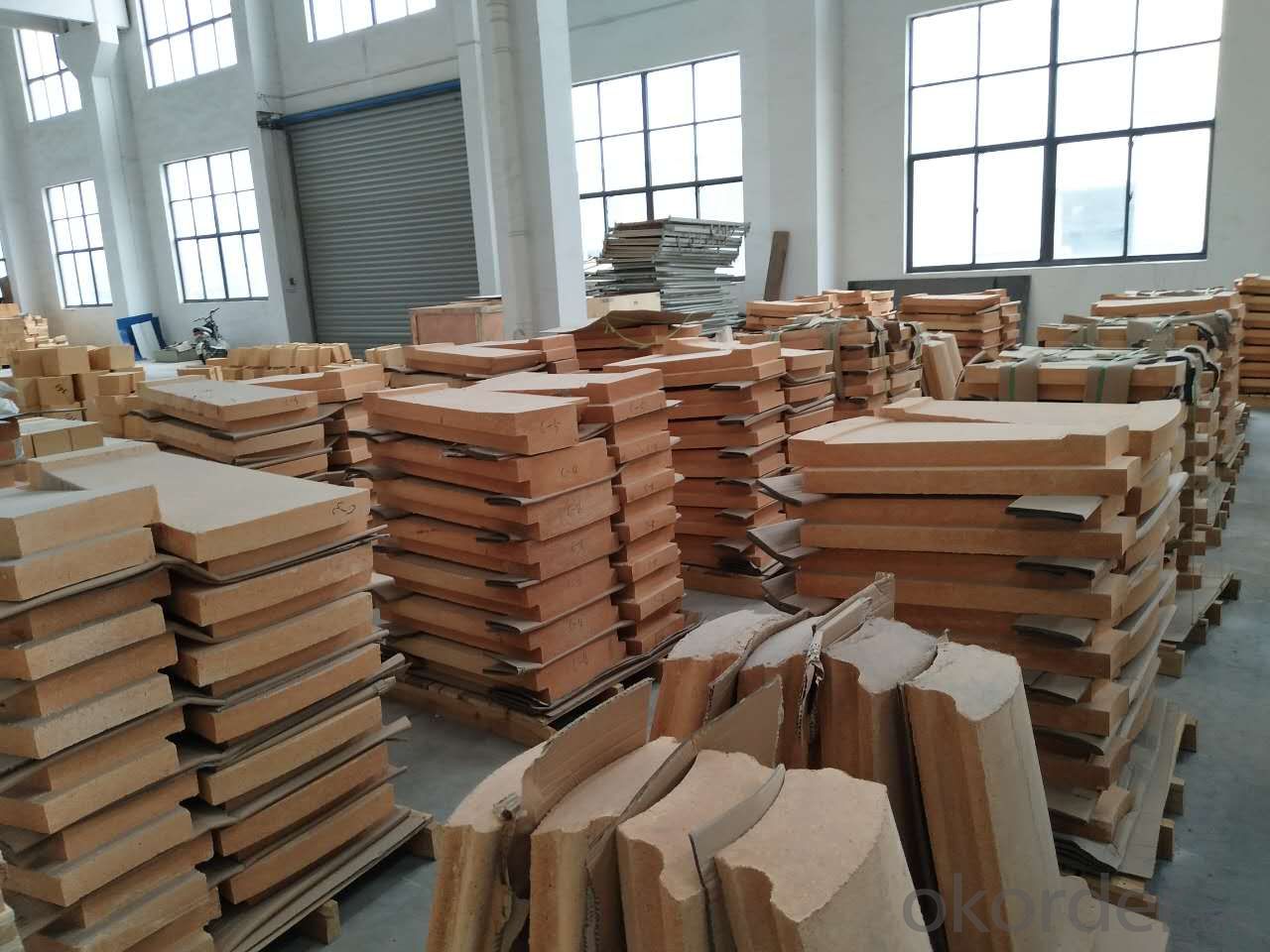
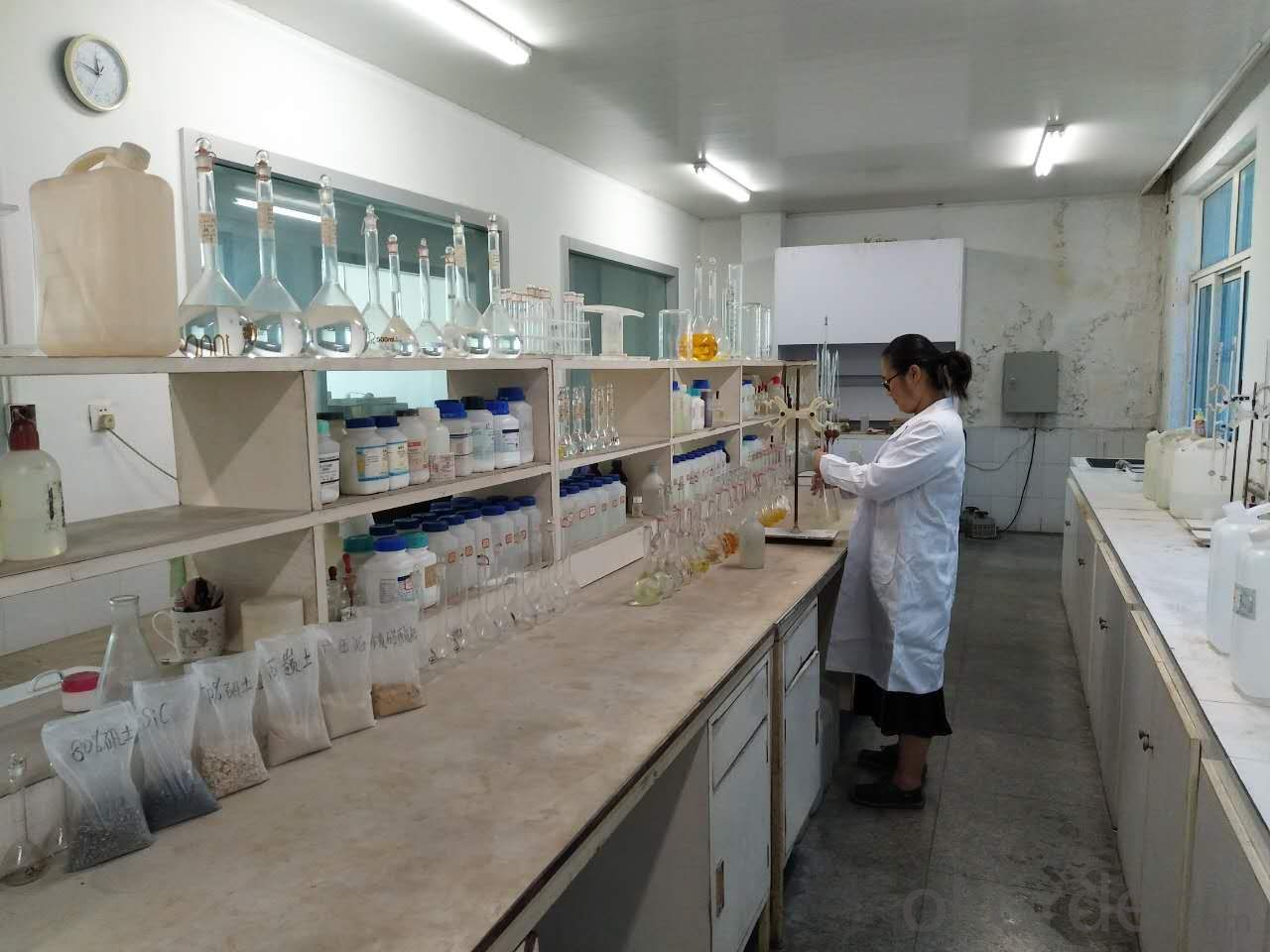
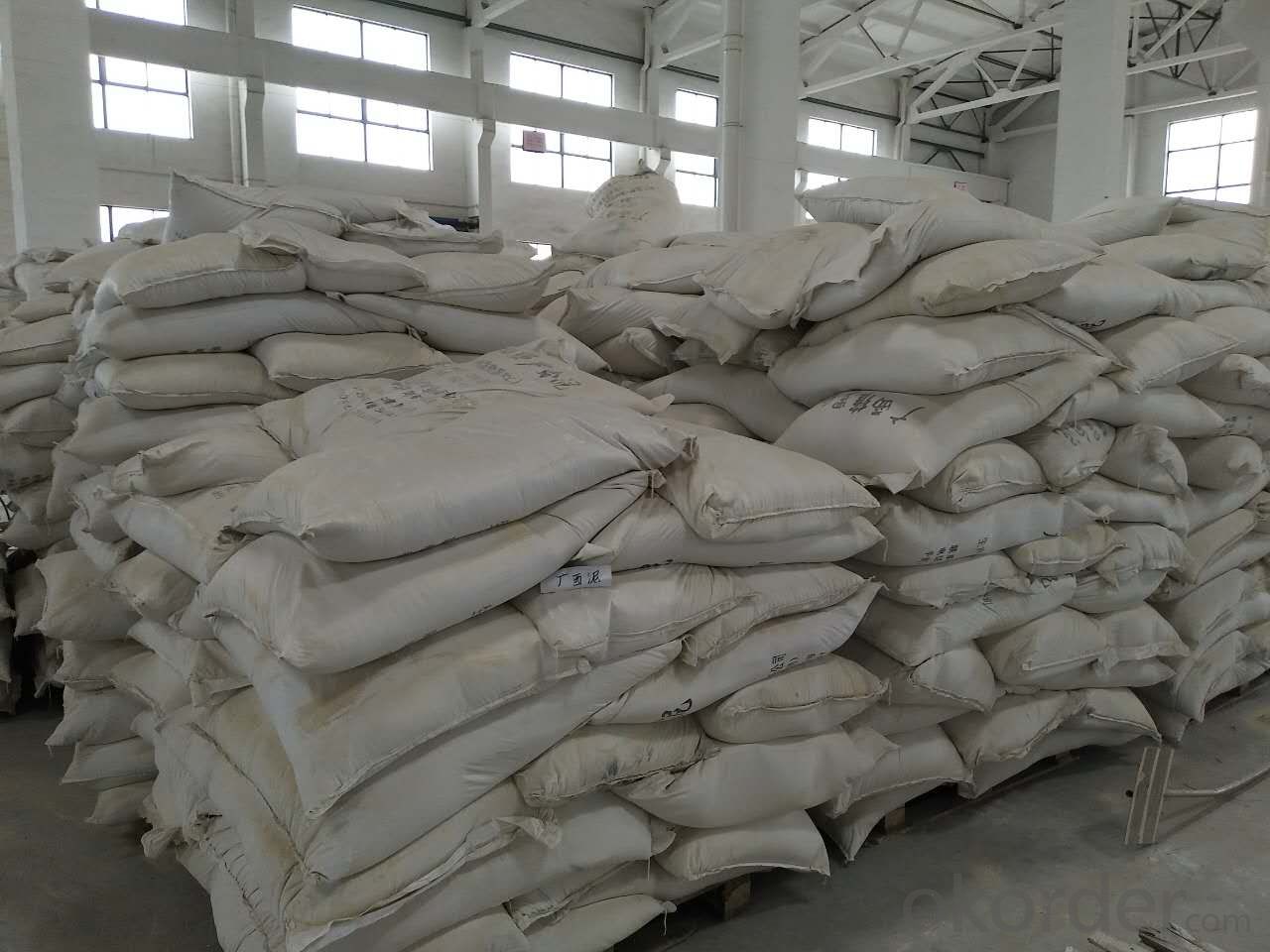
We also supply (Click on following picture if interested):
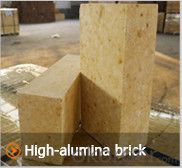 | 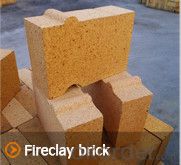 |  |
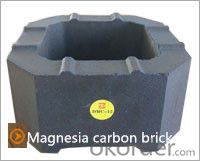 |  | 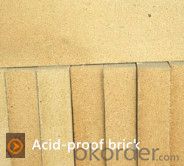 |
Our Process Quality Control:
Starting from the raw material into factory, Every production process of our product should through strict quality control, In addition to rigorous process control, our quality control team inspects the output of each process to ensure material quality and consistency. We do our best to supply the products with best quality to satisfy our customers.
FAQ
Why you need to choose us???
There is an old saying in China, newcomer is the guest.
Give us One minute, just one minute ,you can Eliminate your doubts and witness we maintain an Attitude of high seriousness and professional to solve your problems.
No.1: We are Manufacturer of refrcatory materials, so we can provide you Professional Solutions about your problems. Although our salesman cannot reply you immediately, pls leave your email or phone number, we can let our technician directly help you ASAP.
No. 2: Our Reputation built in the past years through: Russia, Iran, Vietnam and India, etc. You can always get Feedback from our customer in these countries before dealing with us.
No. 3: We have good Connection with Shipping Company, Agency, as well as the local custom and port authority. Making sure we Deliver on time.
No. 4: We have no gap in Communication, because we will help you in our Sincere Attitude.
No. 5: We can provide you the best price, and what you will get from us is our best effort in service and the hospitality that you are willing to become our Friend.
So choosing us is the right choice for you. Pls contact us no hesitation.
- Q: Difference between inorganic insulation material and organic thermal insulation material
- Manufacturing distinction:1, organic insulation materials mainly from petroleum products, including foam polystyrene board (EPS), extruded polystyrene board (XPS), spray polyurethane (SPU) and polystyrene particles. From a nationwide perspective, the organic exterior wall insulation system occupies more than 75% of the current external thermal insulation Market in our country.2, inorganic heat preservation material including expanded perlite, hollow glass beads, rock wool, mineral wool, perlite, glass wool and lightweight block self insulation system, mainly based on inorganic materials such as stone, glass, industrial waste and so on. As the state attaches importance to and requirements of the fire protection safety standards for wall materials, the market share of inorganic thermal insulation materials will be greatly improved.
- Q: Can insulating fire bricks be used as a refractory lining material?
- Yes, insulating fire bricks can be used as a refractory lining material. Insulating fire bricks are designed to have low thermal conductivity, which means they can effectively insulate against heat transfer. This makes them suitable for applications where high temperatures need to be maintained or controlled, such as in kilns, furnaces, and industrial ovens. Refractory lining materials are used to protect the structure of these high-temperature environments from the extreme heat generated inside. They need to be able to withstand the thermal shocks, chemical reactions, and mechanical stresses that occur during operation. Insulating fire bricks offer excellent thermal insulation properties, as well as high temperature resistance, making them an ideal choice for refractory lining applications. In addition to their insulating properties, insulating fire bricks also have low density, making them lightweight and easier to handle and install. This can be beneficial in applications where weight is a concern or where refractory linings need to be replaced or repaired frequently. It is important to note that the specific type and composition of insulating fire bricks may vary, and different applications may require different properties. Therefore, it is essential to consult with a refractory engineer or supplier to ensure the chosen insulating fire bricks are suitable for the specific requirements of the application.
- Q: Can insulating fire bricks be used as a lining for chimneys?
- Yes, insulating fire bricks can be used as a lining for chimneys. These bricks are designed to withstand high temperatures and provide insulation, making them suitable for lining chimneys and protecting them from heat damage.
- Q: Can insulating fire bricks be cut or shaped using common tools?
- Yes, insulating fire bricks can be cut or shaped using common tools. These bricks are generally made from lightweight refractory materials such as clay and minerals, which make them easier to cut and shape compared to traditional fire bricks. Common tools like a handsaw, angle grinder, or even a chisel and hammer can be used to cut and shape the bricks according to the desired size and design. However, it is important to wear protective gear such as gloves, goggles, and a dust mask while working with insulating fire bricks to avoid any potential health hazards.
- Q: Do insulating fire bricks have a low thermal conductivity?
- Yes, insulating fire bricks have a low thermal conductivity.
- Q: Can insulating fire bricks be used in contact with molten metal?
- Yes, insulating fire bricks can be used in contact with molten metal. Insulating fire bricks are designed to withstand high temperatures and are often used in applications involving molten metal, such as in furnaces and kilns. They have excellent thermal insulation properties and are resistant to thermal shock, making them suitable for use in these environments.
- Q: Can insulating fire bricks be used in the construction of aluminum smelting furnaces?
- Insulating fire bricks can indeed be utilized in the construction of aluminum smelting furnaces. These bricks are crafted from lightweight materials like refractory clay and possess exceptional insulating qualities. Consequently, they are well-suited for implementation in environments with elevated temperatures, such as aluminum smelting furnaces. By conserving heat and enhancing energy efficiency, they prove to be advantageous in these settings. Typically, aluminum smelting furnaces function at remarkably high temperatures, frequently exceeding 1000 degrees Celsius. In such extreme circumstances, insulating fire bricks serve as effective thermal insulation, thereby minimizing heat loss and sustaining the desired temperature inside the furnace. This insulation also contributes to reducing the energy required to heat the furnace, leading to cost savings and heightened efficiency. Furthermore, insulating fire bricks exhibit exceptional resistance to thermal shock. This quality enables them to endure rapid temperature variations without experiencing cracking or breakage. This characteristic holds significance in the context of an aluminum smelting furnace, where heating and cooling cycles can occur frequently and swiftly. In addition, insulating fire bricks possess low thermal conductivity, which is another advantage when employed in aluminum smelting furnaces. This property facilitates the retention of heat within the furnace, preventing it from dissipating into the surrounding environment. By diminishing heat loss, insulating fire bricks aid in maintaining a consistent temperature throughout the smelting process, ensuring optimal conditions for aluminum melting and refining. In summary, due to their remarkable insulating properties, resistance to thermal shock, and low thermal conductivity, insulating fire bricks constitute a suitable choice for constructing aluminum smelting furnaces. Their utilization contributes to enhanced energy efficiency, reduced heat loss, and the maintenance of a stable temperature inside the furnace.
- Q: Can insulating fire bricks be cut or shaped to fit different spaces?
- Yes, insulating fire bricks can be cut or shaped to fit different spaces. They are typically made from a soft, lightweight material that can be easily cut or shaped using common tools like saws or knives. This flexibility allows for customization and adaptation to various spaces and applications.
- Q: Can insulating fire bricks be used in the construction of kilns?
- Yes, insulating fire bricks can be used in the construction of kilns. Insulating fire bricks are designed to have a high insulating value, which means they can withstand high temperatures while minimizing heat loss. This makes them ideal for kiln construction, as they help to maintain and regulate the desired temperature within the kiln. Additionally, insulating fire bricks are lightweight and easy to handle, making them convenient for use in kiln construction. They are also resistant to thermal shock, which is important in kilns where rapid temperature changes may occur. Overall, insulating fire bricks are a popular choice for kiln construction due to their insulating properties, durability, and ease of use.
- Q: Do insulating fire bricks have a high resistance to creep?
- Insulating fire bricks possess a notable resistance to creep, indicating their ability to resist deformation over time when subjected to a consistent load or stress. Their design enables them to endure high temperatures and retain their form and integrity despite prolonged exposure to heat. These bricks are composed of lightweight refractory materials like clay, which exhibit low thermal conductivity and exceptional resistance to thermal shock. The amalgamation of these characteristics empowers insulating fire bricks to withstand creep and uphold their structural stability, even in the most challenging and extreme circumstances.
Send your message to us
Insulating Fire Brick - Heavy Duty Fireclay Insulation Brick
- Loading Port:
- Shanghai
- Payment Terms:
- TT OR LC
- Min Order Qty:
- 10 m.t.
- Supply Capability:
- 2000 m.t./month
OKorder Service Pledge
OKorder Financial Service
Similar products
Hot products
Hot Searches
Related keywords
